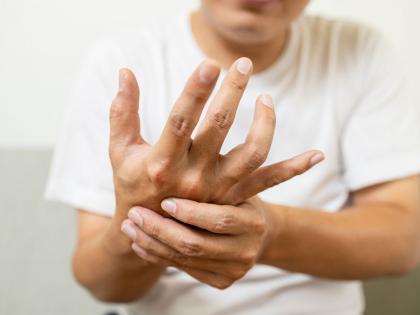What Is Guillain-Barré Syndrome? Symptoms, Causes, and Effective Treatment Options
By Lokmat English Desk | Updated: January 22, 2025 14:27 IST2025-01-22T14:26:19+5:302025-01-22T14:27:10+5:30
Guillain-Barré Syndrome (GBS) is a rare autoimmune disorder in which the immune system attacks the peripheral nervous system, leading ...

What Is Guillain-Barré Syndrome? Symptoms, Causes, and Effective Treatment Options
Guillain-Barré Syndrome (GBS) is a rare autoimmune disorder in which the immune system attacks the peripheral nervous system, leading to nerve damage. It often follows a respiratory or gastrointestinal infection and can affect individuals of any age, though it is more common in adults and malesInitial Sensations: Many patients first experience tingling, numbness, or "pins and needles" sensations in their feet or hands. These sensations may spread upward to the legs and arms.
Muscle Weakness: Weakness often begins in the legs and can ascend to the arms and facial muscles. This weakness can make activities like climbing stairs or walking difficult.
Also Read: Guillain-Barré Syndrome: Pune Reports 26 Positive Cases; PMC on High Alert Amid Rising Infections
Pain: Patients frequently report severe aching or shooting pains, particularly at night, as well as muscle tenderness or cramping.
Facial and Respiratory Issues: Some individuals may develop facial muscle weakness, difficulty swallowing or speaking, and, in severe cases, breathing problems due to paralysis of respiratory muscles.
Autonomic Dysfunction: Additional symptoms can include rapid heart rate, fluctuations in blood pressure, and problems with bladder or bowel control.
The progression of GBS varies significantly among individuals. While some patients reach maximum weakness within two weeks of symptom onset, approximately one-third may require hospitalization due to severe symptoms.
Treatment for Guillain-Barré Syndrome
There is no cure for Guillain-Barré syndrome, but several treatments can help manage symptoms and expedite recovery:
Immunotherapy:
Intravenous Immunoglobulin (IVIG): This treatment involves administering antibodies to reduce the immune system's attack on the nervous system.
Plasmapheresis (Plasma Exchange): This procedure removes harmful antibodies from the blood plasma, potentially speeding up symptom relief.
Supportive Care:
Monitoring and Ventilation: Patients with severe respiratory issues may require mechanical ventilation in an intensive care unit (ICU).
Pain Management: Medications like gabapentin or amitriptyline may be prescribed to alleviate nerve pain.
Preventive Measures: Compression stockings and anticoagulants might be recommended to prevent deep vein thrombosis (DVT) if mobility is significantly impaired.
Most patients improve over time, with many achieving full recovery. However, some individuals may experience residual weakness or long-term complications.
Open in app